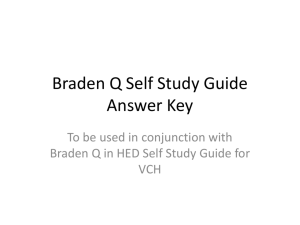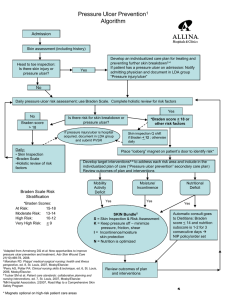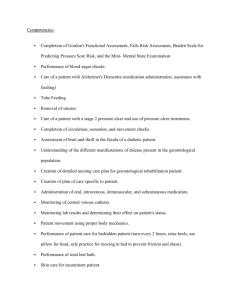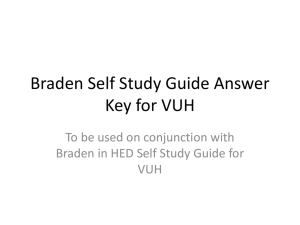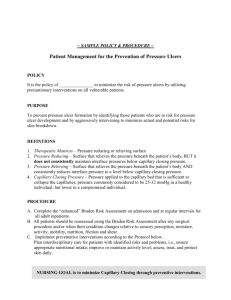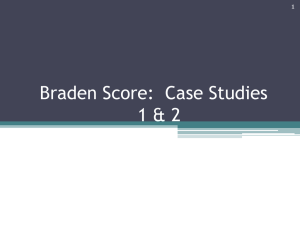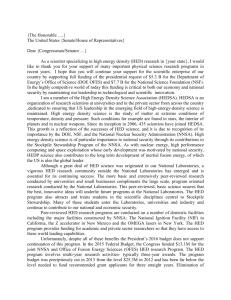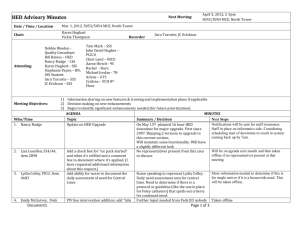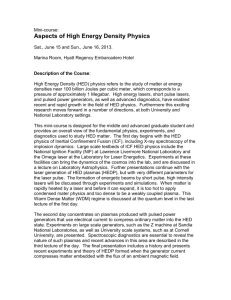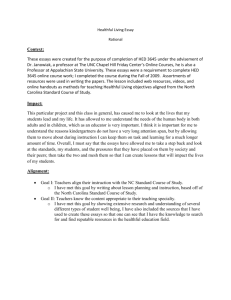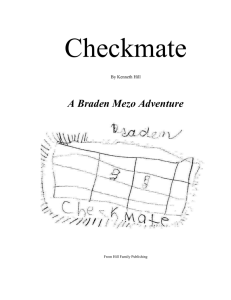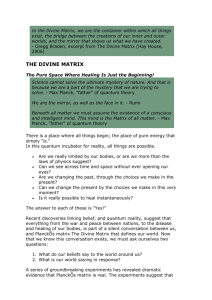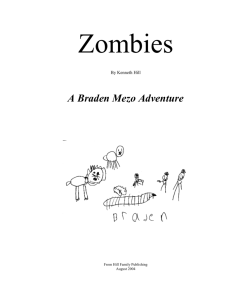Braden in HED A self-study guide *Go Live December 3, 2013* Why
advertisement
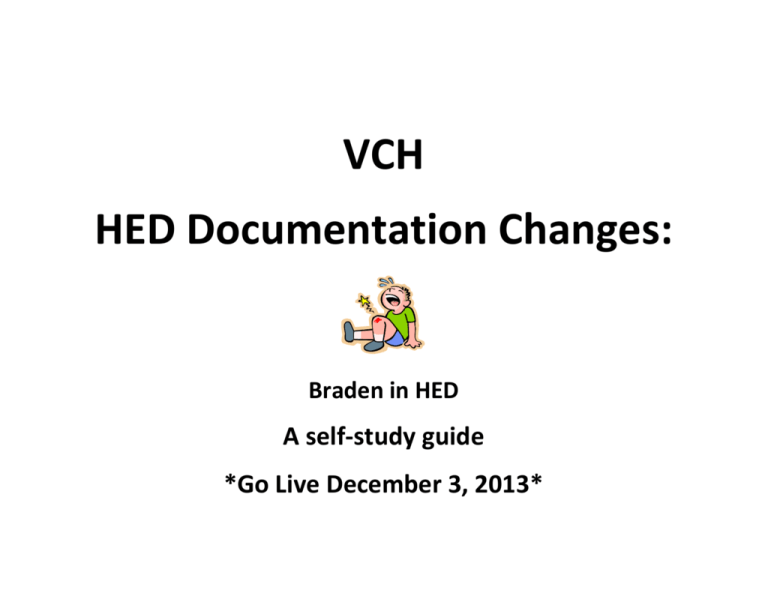
VCH HED Documentation Changes: Braden in HED A self-study guide *Go Live December 3, 2013* Why the change? Increase Nursing satisfaction by charting Braden scores in HED Decrease Nursing documentation Standardized structure of Skin/Wound documentation to the Care Category What’s changed? Braden will no longer be documented in HEO/Wiz but will instead be documented in HED Skin/Wound section. Subscale definitions and suggested interventions in the hover text No skin care orders will generate in HEO/Wiz from the Braden score HED will auto-calculate the score and auto-display the risk level If any of the subscales = 1 or 2, the result is significant and turns red indicating moderate to high risk. For each red item, there should always be a corresponding problem charted as well as related intervention(s). Although it may not make the priority problem list if there are critical physiologic problems. • For every patient a Braden score and SKIN INTEGRITY ASMNT (PROBLEMS) must be charted every shift. IF SKIN INTEGRITY ASMNT (PROBLEMS) = WNL (no further skin care documentation needed) SKIN INTEGRITY ASMNT (PROBLEMS) = any problem then document fields as appropriate To start a new incision/wound click on The Site Detail box will open Click on the Skin Integrity Resource link to see the decision support tree for specialty beds, pressure ulcer staging pictures, and pressure redistribution/ barrier items Practice makes perfect…. 1. Go to the desktop and double click on HED Train 2. Click the HED button 3. Choose a patient from the census list 4. Open the assessment tab 5. Click on the SKIN/WOUND from the left menu bar 6. Practice documenting all three scenarios found on the next page Scenario #1 Ally Doe is a 15 year old female admitted 2 days ago with Anorexia. She is ambulates in the halls and repositions herself in bed regularly. Skin warm & dry and pressure points are free of any redness, swelling, or irritation. She is alert and has no sensory deficits. She has lost 10 pounds over the last 2 months; she is on calorie counts with a sitter at the bedside. Ally eats less than half of meals provided. Vital signs are within normal limits. Based on this information, how would you score her Braden Q Pressure Ulcer risk level? Scenario #2 Andy Doe is a 4 month old male transferred to PCICU for post-op cardiac care. He is intubated, on IV pressors, with a mediastinal incision and chest tubes. In addition he is on paralytics and sedation. Skin is warm and dry. He has redness at the pulse oximetry site and a SP02 of 78. Andy is NPO and has had TPN and Lipids infusing for 48 hrs. . Based on this information, how would you score his Braden Q Pressure Ulcer risk level? Part 2, POD 2: Andy developed a fever and is started on IV antibiotics. During the night the mediastinal incision opened spontaneously and is draining a moderate amount of odorless, purulent fluid. Andy has developed a diaper rash; other skin assessment is largely unchanged. How would you document his incision/wound? How would you determine what skin care treatment is needed, where would you find this information? Scenario #3 Part 1: Susie Doe is an 8 year old female admitted with Cystic Fibrosis exacerbation. Susie ambulates within the room and repositions herself in bed regularly but with some difficulty due to weakness. Alert with no sensory deficits. Her mother states she has a poor appetite during an exacerbation and generally eats about half of meals provided. Susie’s SP02 is 88 on 3L O2 by nasal cannula. Skin warm & dry and pressure points are free of any redness, swelling, or irritation. Based on this information, how would you score her Braden Q Pressure Ulcer risk level? Part 2, Hospital day 3: Susie SP02 drops to low 80s despite increase in O2 and there are changes in her chest x-ray. She is transferred to PICU. Susie’s put on Bipap. She rarely ambulates and struggles to reposition herself in bed due to increased work of breathing and weakness. Skin is warm and dry and pressure points free of redness, swelling or irritation. Hands and feet very pale, cool and numb. Susie rarely eats more than a few bites of any food offered. How would you score her Braden Q Pressure ulcer risk level? Seek and Find Can you find the following items? If a Barimax II bed is the correct bed for your patient The PMM number for a foam heel lift boot The staging picture for Stage II pressure ulcer The PMM number for Ilex paste Almost done Congratulations! You’ve completed the Braden in HED training. Extras *Go Live December 3, 2013* A Braden in HED folder can be found at the Charge Nurse desk Inside is a Questions/Issues log, please fill out if needed Your CAPS representative will look at the Questions/Issues log and answer/trouble shoot when they round on your unit Call the HelpDesk with immediate problems if your CAPS is not on your unit System Support Services will provide support 24 hours/day through December 14, 2013 Debriefing meetings are scheduled for day shift on December 4 at 3:30, December 9 at 12:00 and night shift on December 4 at 2:00 am in VUH and December 5 at 2:00 am in VCH.
